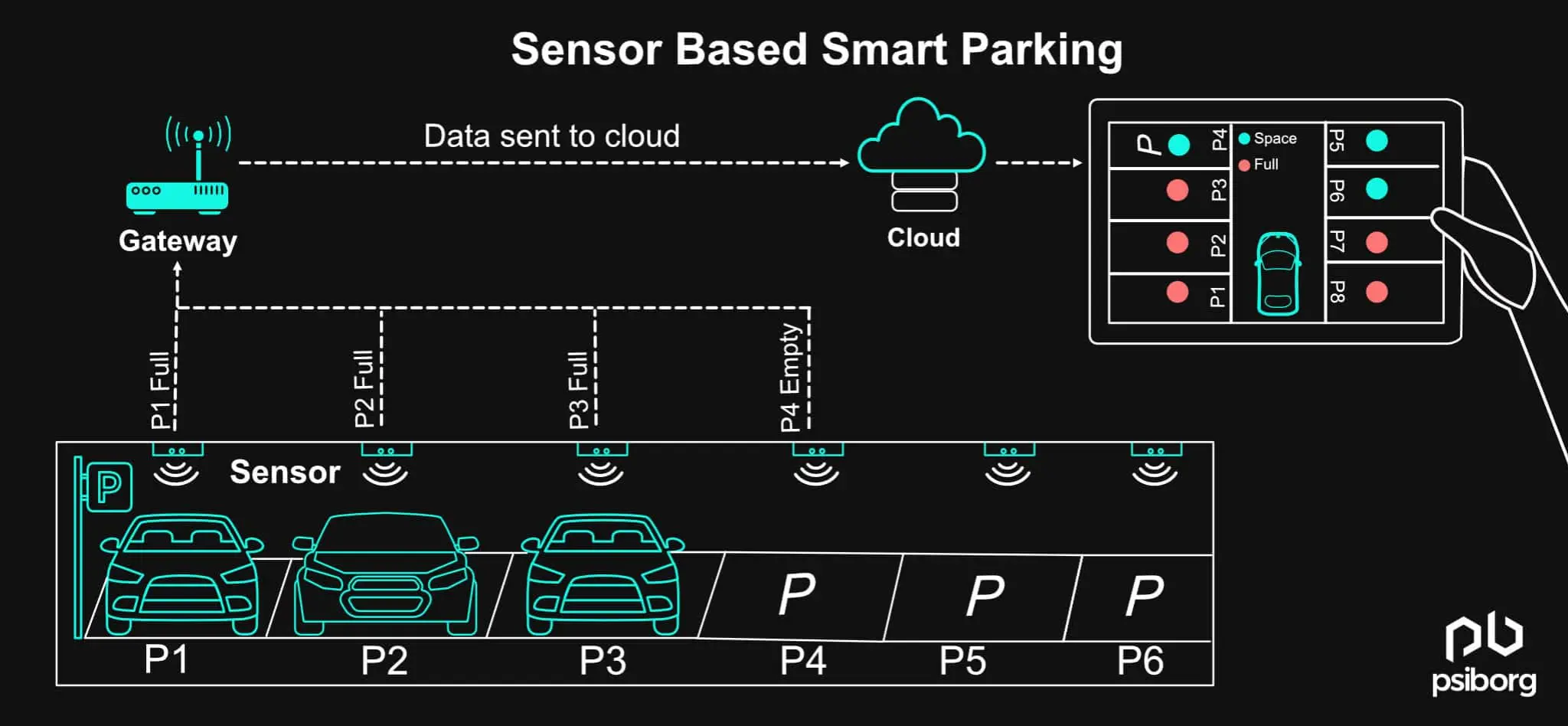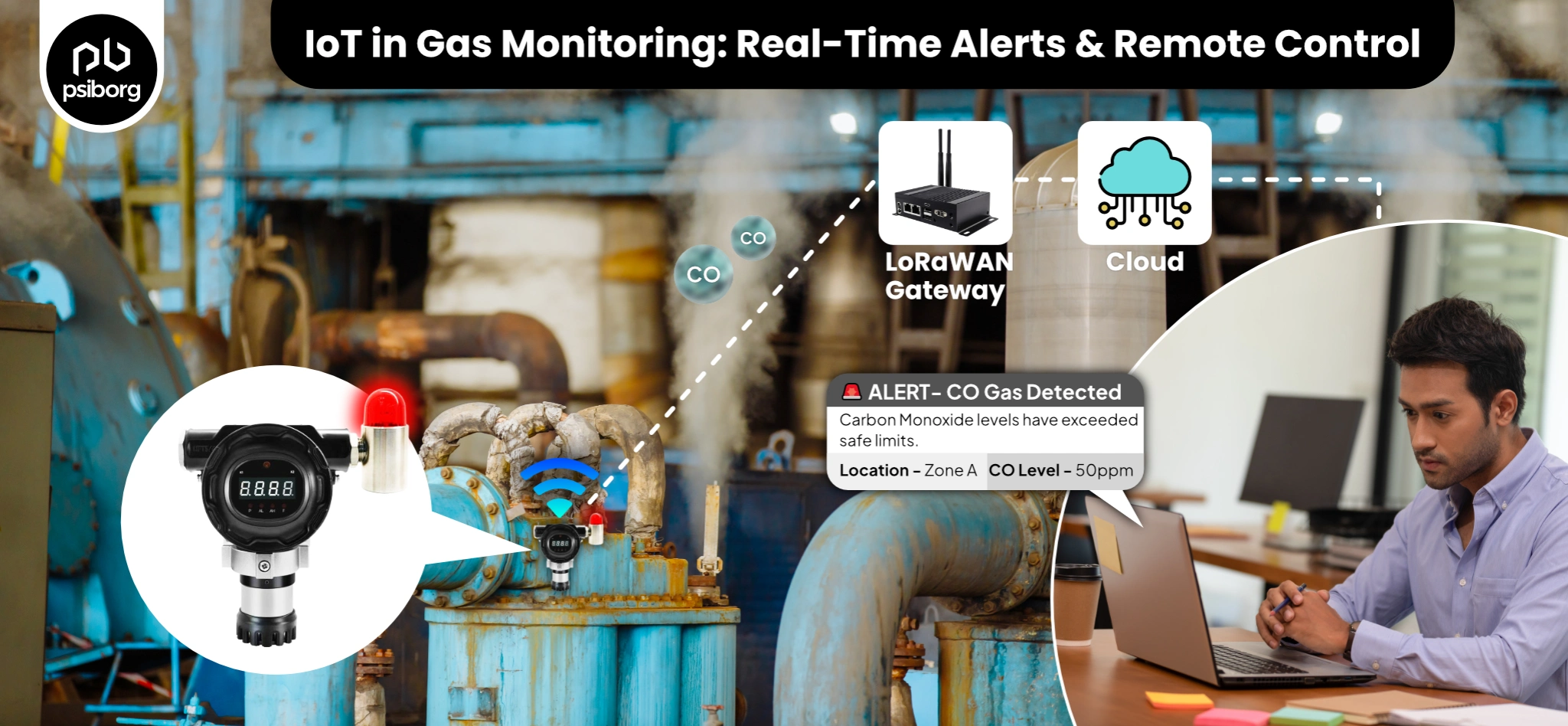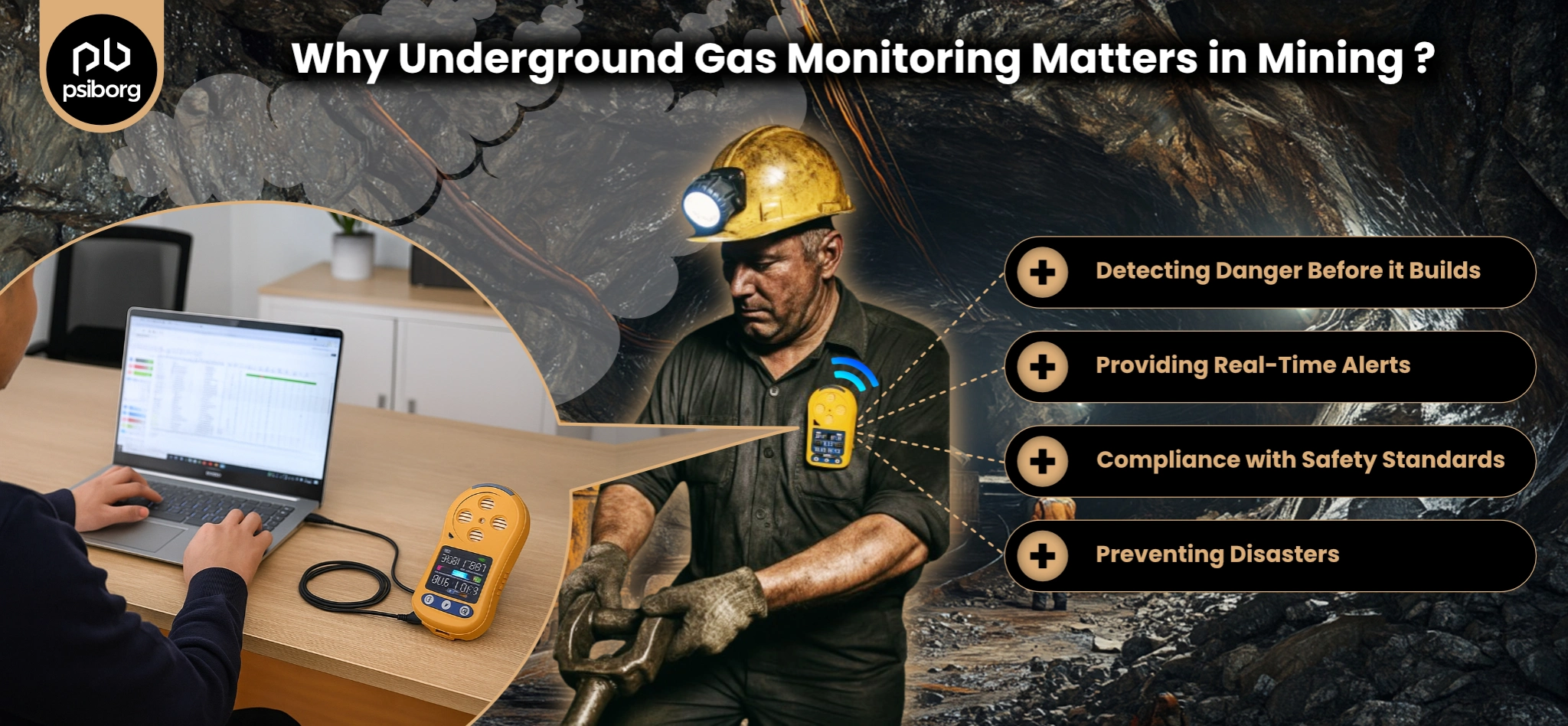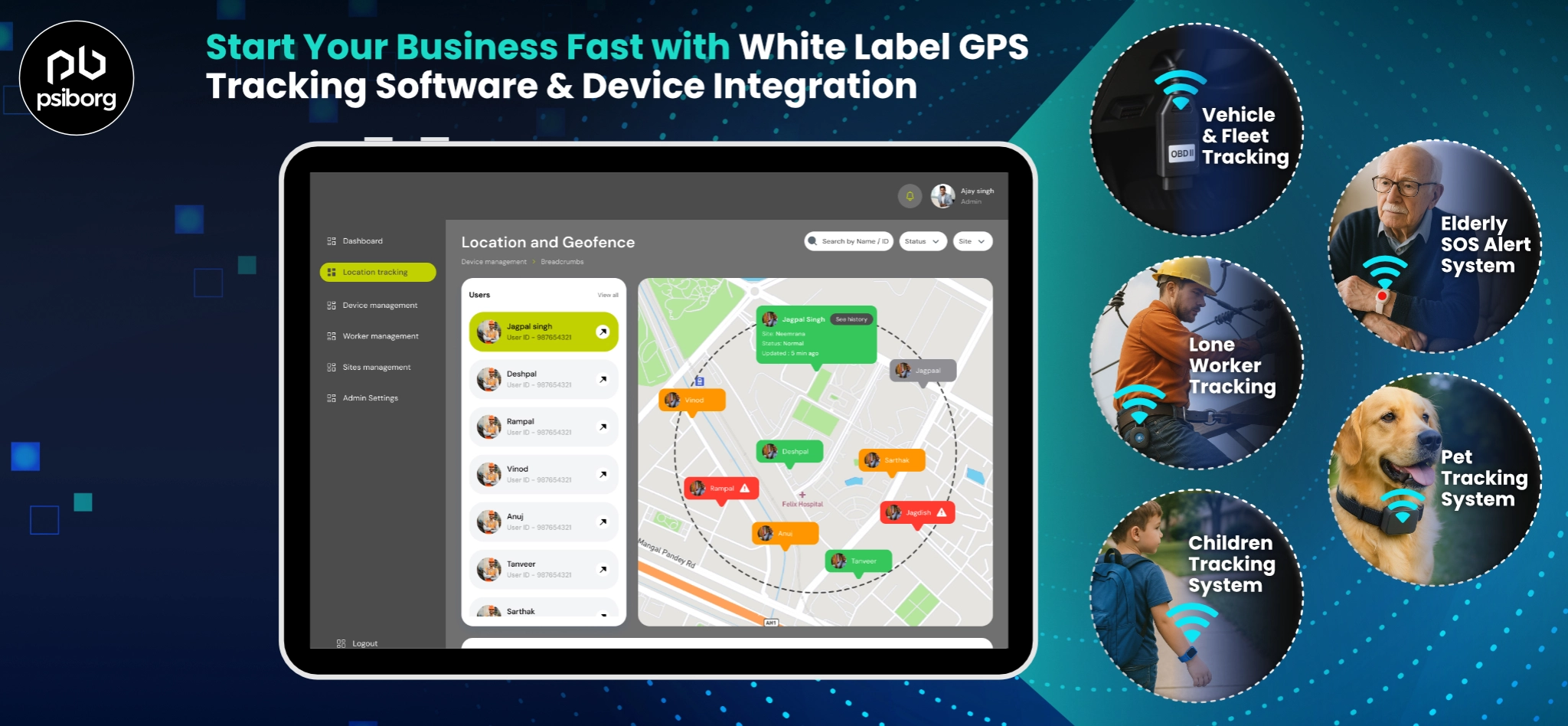Managing parking in busy environments can be quite challenging, especially with high demand and limited space. This is where a Smart Parking System using IoT technology comes in, offering a more efficient solution to parking management.
In this blog, we’ll dive into how smart parking systems operate, their key benefits and features, and how they are contributing to a more sustainable future.
What is a Smart Parking System?
A smart parking system uses IoT technology to manage and monitor parking space more efficiently. It uses sensors to detect whether parking spots are occupied or free and provides real-time information to drivers through apps. It helps to reduce traffic congestion, saves drivers time, and optimizes the use of available parking spaces.
How does Smart Parking System using IoT Work?

Smart parking systems use sensors in parking spaces to check if a spot is vacant or occupied in real-time.
Subsequently, these sensors send the information wirelessly to a cloud server. Once the data reaches the server, it processes the data and creates a real-time map that shows available parking spots.
Next, this updated map is shared with drivers through a mobile app or digital signs, which help them to find a spot quickly.
As a result, instead of drivers spending time to searching for parking, they can easily identify available spots through real-time updates. Therefore, this makes the entire parking process faster and more efficient.
How Can a Smart Parking System Improve Urban Parking?
Let’s understand how smart parking systems using iot improve urban parking problems, as explained below:
- The system provides real-time data that shows where parking spots are available, so drivers don’t have to waste time searching for parking. This helps to reduce traffic congestion and lower emissions, which makes the air cleaner.
- With the help of this system, cities can also make better use of their parking spaces. The system tracks which spots are used most and helps to manage parking areas more effectively.
- In short, smart parking systems using IoT make parking more efficient, reduce traffic, and help cities to manage parking spaces better.
What sensors are used in the Smart Parking System?
An IoT-based smart parking system uses different types of sensors to detect parking space availability, are defined below:
- Ultrasonic: These sensors use sound waves to measure the distance between the sensor and the object (such as a car). They provide accurate readings for detecting whether a parking space is occupied or vacant.
- Electromagnetic field detection: These sensors detect small changes in the magnetic field when a metal object like a car comes close to the sensor. It helps to identify whether a parking spot is taken or not.
- Infrared: Infrared sensors detect changes in temperature or motion. When a car enters or leaves a parking spot the temperature or movement triggers the sensor which indicates the status of the parking space.
Features of IoT-Based Smart Parking System
The smart parking system offers several features that help to improve parking efficiency and enhance the user experience are explained below:
Interface Showing Free And Occupied Parking Spaces
The system offers a cloud-based dashboard that shows data like parking space availability, indicating which spots are vacant and which are occupied.
Often, the interface uses color codes or maps to clearly show open spaces which allows drivers to quickly locate a spot without having to drive around.
Real-Time Monitoring Of Parking Occupancy
A key feature of smart parking systems is real-time monitoring, which allows drivers to access information on parking availability across various areas in a city.
Additionally, the systems include an interactive occupancy map that shows the status of each parking space. It indicates whether a spot is vacant or occupied and helps drivers to plan their parking efficiently.
User-Friendly Interface, Access Permissions For Different User Groups
The system provides a user-friendly interface that is easy to understand.
The system also considers different user groups, such as elderly drivers or visually impaired individuals, by offering features like larger text or voice assistance to ensure the system is accessible to everyone.
Api For End-User and Management Applications
Smart parking systems should include an API (Application Programming Interface) that allows the system to integrate with other management tools or parking monitoring software.
This makes it easier for parking operators to manage the system and for developers to create third-party apps that can interact with the parking system, improving overall efficiency and flexibility.
Benefits of Using IoT-Based Smart Parking System
1. Increased revenue for parking operators
- Parking operators can increase their revenue with a smart parking system in a few ways. First, they can implement dynamic pricing, where the price of parking changes depending on the demand. For example, prices can go up during busy times like rush hours.
- Additionally, the system helps to optimize space usage, making sure parking spots are used efficiently and reducing the chances of having empty spots during peak times.
2. Higher Safety and Security
- With IoT-based smart parking, parking areas are constantly monitored through sensors and cameras. This system can detect unusual activity such as unauthorized parking or potential security threats.
- If something unusual is detected, the system can alert security personnel or the vehicle owner which helps to prevent theft or damage to vehicles.
3. Improved user experience
- The system makes parking easier and more convenient for users.
- They provide real-time information on available spots, so drivers can quickly find an open space.
4. Optimizing Space And Time In A Tight And Busy Urban Environment
- The system helps to maximize the use of available parking spaces, ensuring optimal space utilization across the city. By guiding drivers directly to available spots and managing spaces efficiently.
- It significantly reduces the time spent searching for a parking space.
5. Smart City Integration
- Smart parking systems support smart city solution development by sharing real-time parking updates, which reduce traffic jams and pollution.
- They also connect seamlessly with other urban systems like EV charging stations and public transport, making city life smoother and more efficient.
Trends in IoT-Based Smart Parking Systems
- Parking demand management and space optimization
- Personalized parking guidance
- Parking reservation systems
- Dynamic parking prices and policy optimization
- Detection of parking zones, fees, and overstay violations.
Conclusion
Overall, smart parking systems play a crucial role in improving urban parking efficiency, reducing traffic congestion, and enhancing the user experience. By utilizing IoT technology, these systems offer real-time monitoring, optimal space management, and increased security.
We, at PsiBorg, an IoT development company, understand the practical problems associated with an inefficient parking management system. With our expertise in IoT, we excel at building the most hi-tech and efficient IoT dashboards and Mobile applications for use cases like IoT-based parking management systems. Do reach out to us to enquire about full-stack IoT development solutions.
FAQs
A smart parking system using IoT helps businesses supervise their parking spaces remotely. Plus, it also solves the problem of overcrowded parking slots. Basically, a smart parking solution gives real-time data on parking space availability, pricing, payment, an everything beyond.
In a smart parking system, IoT technology facilitates real-time monitoring of parking space availability through sensors embedded in parking spots. Using a mobile app, drivers can locate and reserve available spots via this data, reducing congestion and improving efficiency.
Smart parking systems use Internet of Things technology to automate and optimize parking spaces. An IoT parking system comprises IoT devices and sensors to collect parking lot occupancy data in near real-time and send it to the cloud or network. Furthermore, mobile or web apps can be used to visualize all parking space-related data.
Some of the use cases of a smart parking management system or an IoT parking system are:
– Reduced congestion
– Time savings for drivers
– Increased parking space utilization
– Improved user convenience
– Improved revenue generation for parking operators
– Real-time data insights for city planning
– Integration with other smart city systems
The future of smart parking is focused on making parking more efficient and integrated with other smart city systems. With IoT technologies, parking management will improve by reducing traffic and using parking spaces better.





